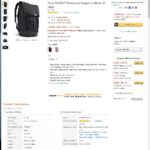Rough and ruff are homophones—words that sound the same but have different meanings and spellings. This can lead to confusion, especially in writing. This article clarifies the distinctions between these two words, providing definitions, pronunciation, examples, and context to help you use them correctly.
Defining “Rough” and “Ruff”
Rough can function as both a noun and an adjective.
- Noun: In golf, “rough” refers to the longer grass bordering the fairway.
- Adjective: “Rough” describes something with an uneven surface (e.g., rough terrain). It can also characterize someone’s behavior as unrefined or coarse (e.g., rough manners). Additionally, it can describe the jagged edge of a leaf or a jerky, unsteady movement (e.g., a rough ride). Finally, “rough” can indicate something incomplete or unpolished (e.g., a rough draft).
Ruff primarily functions as a noun.
- Noun: A ruff is a type of wading bird, specifically a Eurasian sandpiper known for the male’s distinctive neck feathers during breeding season. In card games, “ruff” describes the act of winning a trick with a trump card when unable to follow suit. It can also refer to a type of stiff, pleated collar worn in the past.
Pronunciation of “Rough” and “Ruff”
While both words share the same pronunciation, represented phonetically as /rʌf/, subtle regional variations might exist.
Examples of “Rough” in a Sentence
- The golf ball landed in the rough, making it difficult to hit.
- The carpenter sanded the rough wood until it was smooth.
- His rough behavior offended several guests at the party.
- The rough edges of the leaf were a distinguishing feature.
- The old truck gave us a rough ride across the bumpy field.
Examples of “Ruff” in a Sentence
- The male ruff displayed his impressive neck feathers to attract a mate.
- He played a ruff and won the trick, much to his opponent’s dismay.
- The Elizabethan portrait depicted a nobleman wearing a starched white ruff.
Distinguishing Between “Rough” and “Ruff” in Context
Choosing between “rough” and “ruff” depends entirely on the context. Consider the intended meaning and the part of speech required. If you’re describing a texture, an unpolished state, or unrefined behavior, “rough” is likely the correct choice. If you’re referring to a bird, a card game maneuver, or a historical collar, “ruff” is the appropriate word.
Conclusion
Understanding the difference between homophones like “rough” and “ruff” is crucial for clear and effective communication. By paying attention to context and utilizing the definitions and examples provided, you can confidently choose the correct word and avoid common writing errors. Mastering these subtle distinctions will enhance your writing skills and ensure your message is conveyed accurately.

